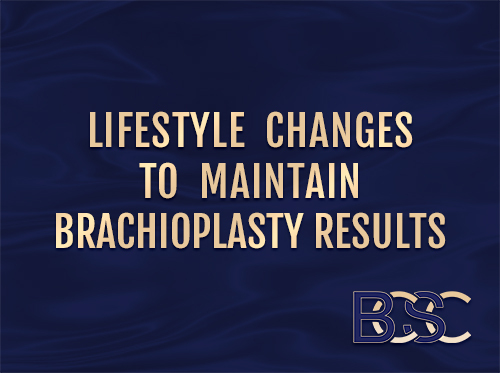Brachioplasty for Patients with Loose Arm Skin Due to Aging
Ageing and lifestyle habits affect the skin, muscles, and fat layer, contributing to arm sagging in older patients. Arm lift surgery tightens loose skin on the upper arms to restore firmness and tonality. Mature patients can only have the surgery if they are physically healthy.
How does ageing affect the arms?
The arm skin becomes thinner and more fragile with age. The underlying tissues can also lose or gain volume due to age-related factors. External factors also can cause poorly defined upper arms, including sun exposure and a sedentary lifestyle. (Ref 1)

Skin atrophy
When looking at mature skin under a microscope, the derma-epidermal junction is usually thinner than that of a younger patient. (Ref 2) Aged skin also produce fewer keratinocytes and fibroblasts, which are cells that repair the epidermis and create new collagen, respectively. (Ref 2, 9) Older skin is also typically less hydrated than younger skin. (Ref 2, 9)
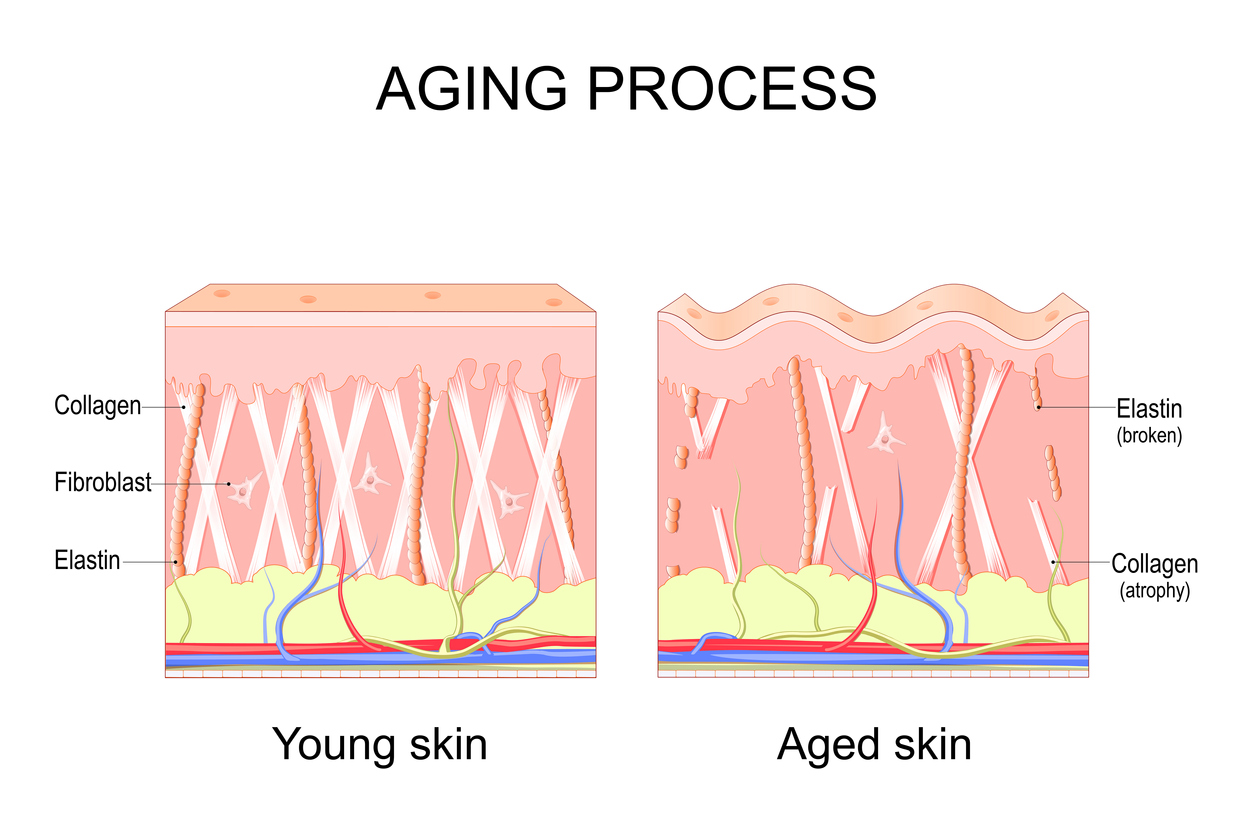
Together, all of this causes the skin to become weak and frail with age. This helps explain why the arm skin of older patients develops a saggy, crepey appearance. (Ref 2)
Researchers at the University of Geneva first coined the term ‘dermatoporosis’, or chronic cutaneous fragility. (Ref 11) Just like people with osteoporosis can’t form new bone as effectively to replace lost bone, people with dermatoporosis have skin with impaired functioning.
As you might expect, the chance of dermatoporosis rises as a person approaches age 60. (Ref 2) Medications like anticoagulants, topical and oral corticosteroids, and health issues like chronic renal failure can also induce dermatoporosis. (Ref 10)
Muscular changes
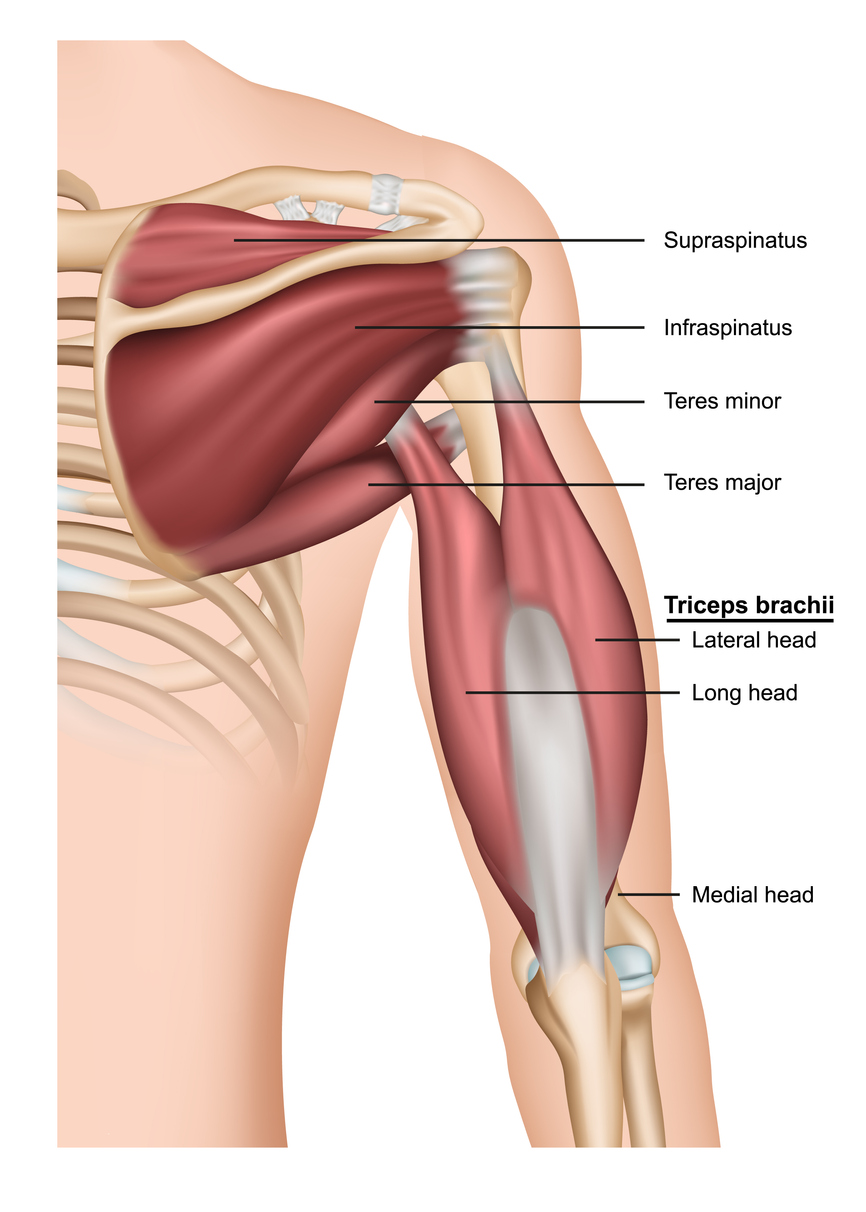
Losing muscle mass is a common age-related problem. By age 70, muscle mass is estimated to be reduced by 30 to 40 percent and is often replaced with fatty tissue. (Ref 5) Aged skin is less elastic, so it can’t shrink around the new arm contours as effectively as young skin when muscle is lost. Sagging skin is an unfortunate consequence of this.
Thinning of the subcutaneous fat layer
Subcutaneous fat lies underneath the skin. Fat helps to pad the skin surface, giving the skin a plump, firm appearance. With age, the subcutaneous fat layer becomes thinner (Ref 1), causing the arm skin to appear slack.
Changes in body fat distribution
Older patients often gain excess fat in the upper arm area since they are usually less physically active than younger patients (Ref 5). Mobility issues, medication side effects, or a slower pace of life are often to blame. Metabolism also slows as the years go by, leading to weight gain in the upper arms. (Ref 5)
Losing weight later in life
Weight loss is one of the top causes of excess loose skin on the arms. When young people lose weight, their skin usually contracts without leaving loose skin behind. Older patients do not have this benefit since their skin is less elastic. The same goes for massive weight loss patients. These patients may need an upper arm lift procedure to removing the remaining skin.
Sun damage
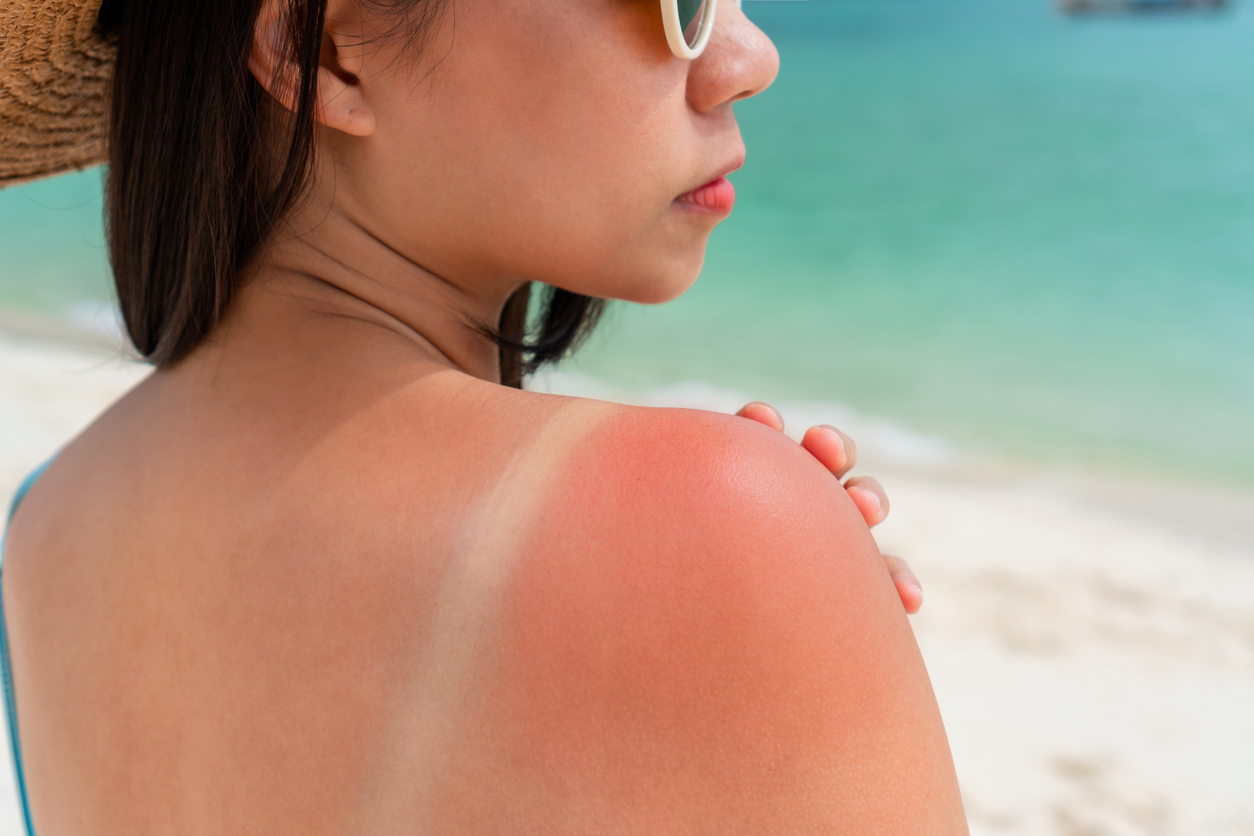
Older patients have endured decades of sun exposure, which can speed skin aging. Long-term sun damage degrades the collagen and elastin fibers, causing the skin to lose strength and elasticity. (Ref 4, 9) Since the upper arm skin is exposed to the sun more than other body parts, it is one of the most common areas to develop saggy skin.
Menopause
Estrogen plays an important role in skin health. It helps to regulate keratinocytes and fibroblasts within the skin. Estrogen levels decline as a woman approaches menopause (Ref 3). As estrogen drops, the skin on the upper arms can become droopy and wrinkled.
Interestingly, menopausal women that take estrogen as part of hormone replacement therapy (HRT) may find their skin doesn’t age as rapidly. HRT can improve skin thickness, collagen production, skin elasticity, and hydration, all of which can slow skin aging. (Ref 9, 10) However, taking estrogen won’t tighten saggy arms like an arm lift can. It simply supports overall skin health.
How does brachioplasty surgery rejuvenate aging arms?
Patients with sagging arms and excess arm fat may benefit from liposuction-based arm lift surgery, a cosmetic procedure that gives the upper arms a tighter, slimmer contour.
First, our surgeons use VASER liposuction to break the fat cells apart and remove them with a suction cannula. Then they make an incision, usually from the elbow to the armpit, and trim off the excess arm skin.
Brachioplasty surgery can dramatically improve the arms’ appearance, but it is not right for everyone.
Special Considerations For Mature Arm Lift (Brachioplasty Surgery) Patients
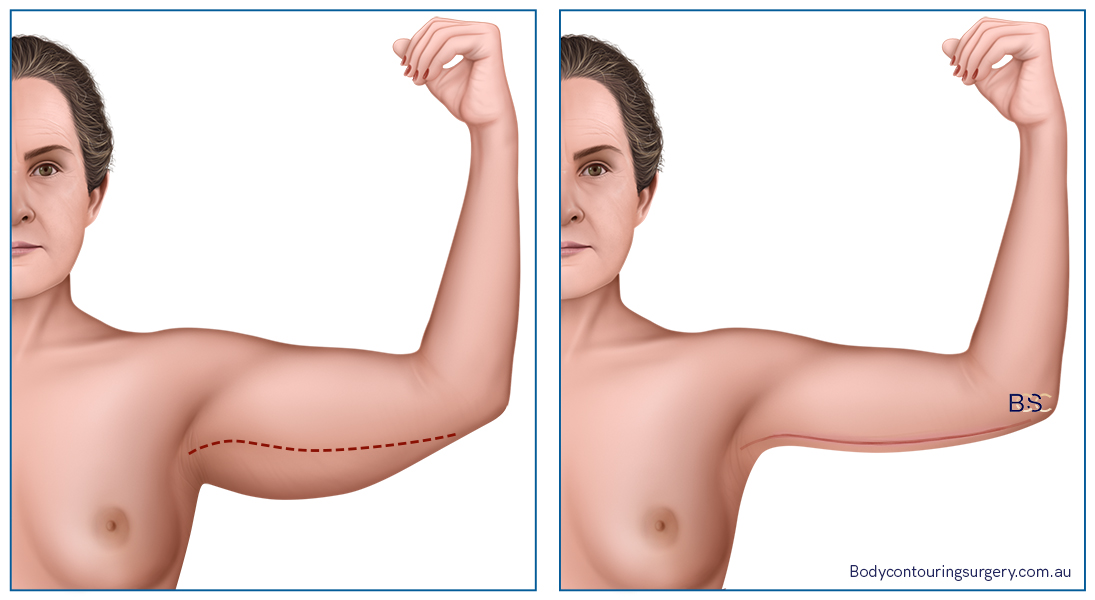
Here is what patients over age 50 should know about arm lift surgery.
They must have realistic expectations
While an arm lift procedure can improve the firmness and shape of the upper arms, it won’t make your arms look like they did in your teens or 20s. The surgery tightens the skin and removes excess tissue. However, it won’t restore the collagen and elastin your skin had during youth.
They are more likely to have wound healing problems after surgery
After an arm lift procedure, the surgical incision needs to heal. Compared to younger patients, older individuals are more likely to develop soft-tissue complications such as a skin infection after the operation. (Ref 10)
Additionally, elderly patients often have poor platelet and molecule adhesion, which slows healing after any surgical procedure. The proliferation phase of healing is also impaired as fewer keratinocytes are produced. The final stage of healing, the tissue remodeling phase, is less effective in elderly patients since they have less collagen. (Ref 2)
Diabetes can also delay wound healing after an arm lift procedure. (Ref 5) An estimated 33 percent of people over age 65 are diabetic. (Ref 7)
Age-related health issues could make it unsafe to have arm lift surgery
A good candidate for brachioplasty is in good health. Older patients are more likely to have pre-existing medical conditions, which can increase their risk factors for complications. Surgeons must carefully review the patient’s medical history during the initial consultation, especially if they are older. If you have issues such as diabetes, heart disease, or breathing problems, you may not be able to undergo brachioplasty.
Arm lift surgery has risks, regardless of age
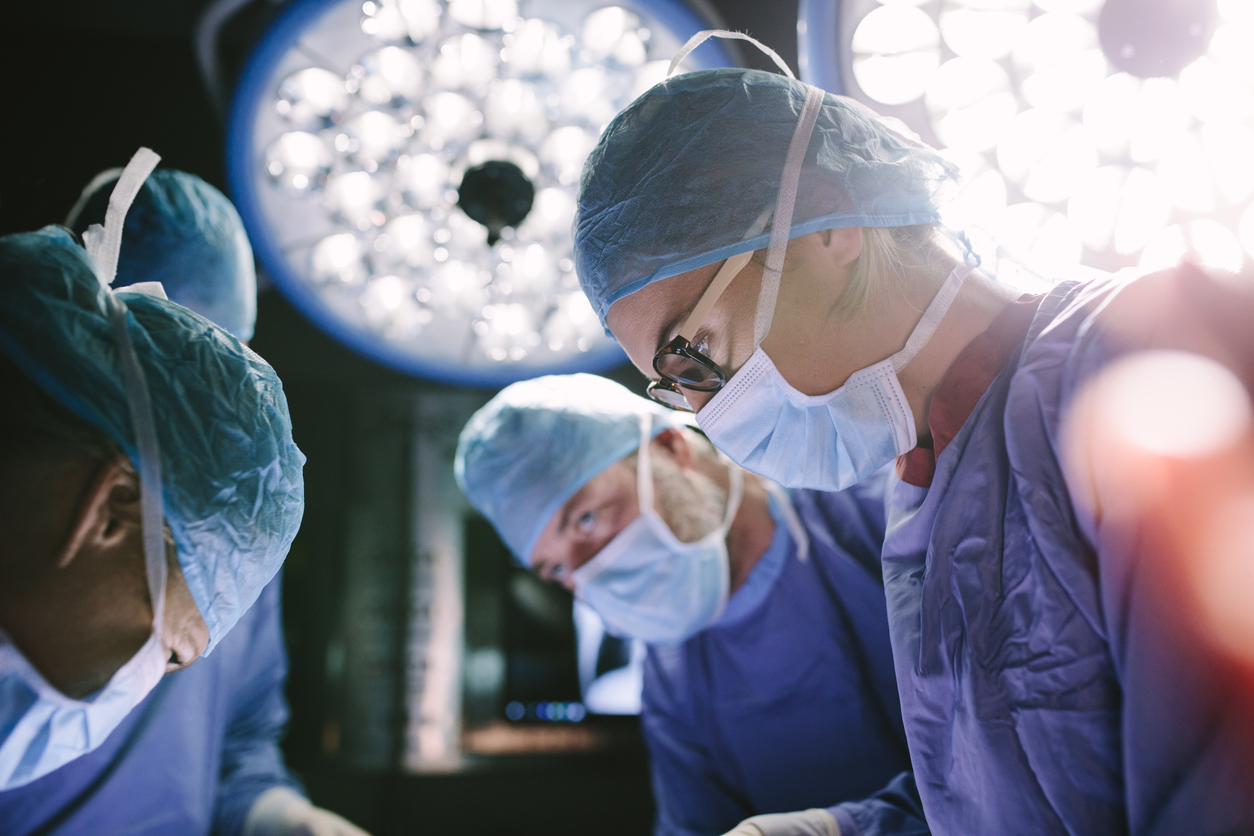
No surgeon can guarantee a risk-free surgery. There is always a chance of an unforeseen complication, even in patients who are in good health. Possible surgical complications include blood clots, infection, excessive bleeding, and nerve damage. These potential complications can happen to any arm lift patient, young or old.
They will need to be healthy enough to undergo general anaesthesia
An arm lift operation requires general anaesthesia, which can be risky for geriatric patients with declining health. While fatalities from general anaesthetic are extremely rare, patients with cardiovascular or respiratory problems are most at risk.
They may need extra assistance as they heal from surgery
The healing process does not happen overnight. All arm lift patients will need assistance with driving and household chores in the first few weeks after the arm lift surgical procedure. This is especially true for older patients with pre-existing mobility issues or declining physical health.
They tend to lead less active lives, which may make it easier to take time off to recover from the operation
An arm lift requires up to two to three weeks off work. Strenuous exercise is also off-limits for several weeks. Retirees will not have to worry about requesting time off work. Older patients still in the workforce are less likely to have manual labor jobs than their younger counterparts, which may mean returning to work sooner than those with physically demanding careers. Finally, older patients are unlikely to have young children at home, which can make the recovery period more manageable.
They will need to maintain their arm lift results with a healthy lifestyle
It is crucial to maintain a stable weight after arm lift surgery. Otherwise, the excess skin and unwanted fat may return. The trouble is that some older patients are set in their ways in terms of diet and exercise habits. Geriatric patients are also more likely to have mobility issues that make them less physically active. These patients will need to be extra diligent about sticking to a healthy diet and incorporating regular exercise into their routine so as to maintain a stable weight after the operation.
Their surgical scar may fade quicker
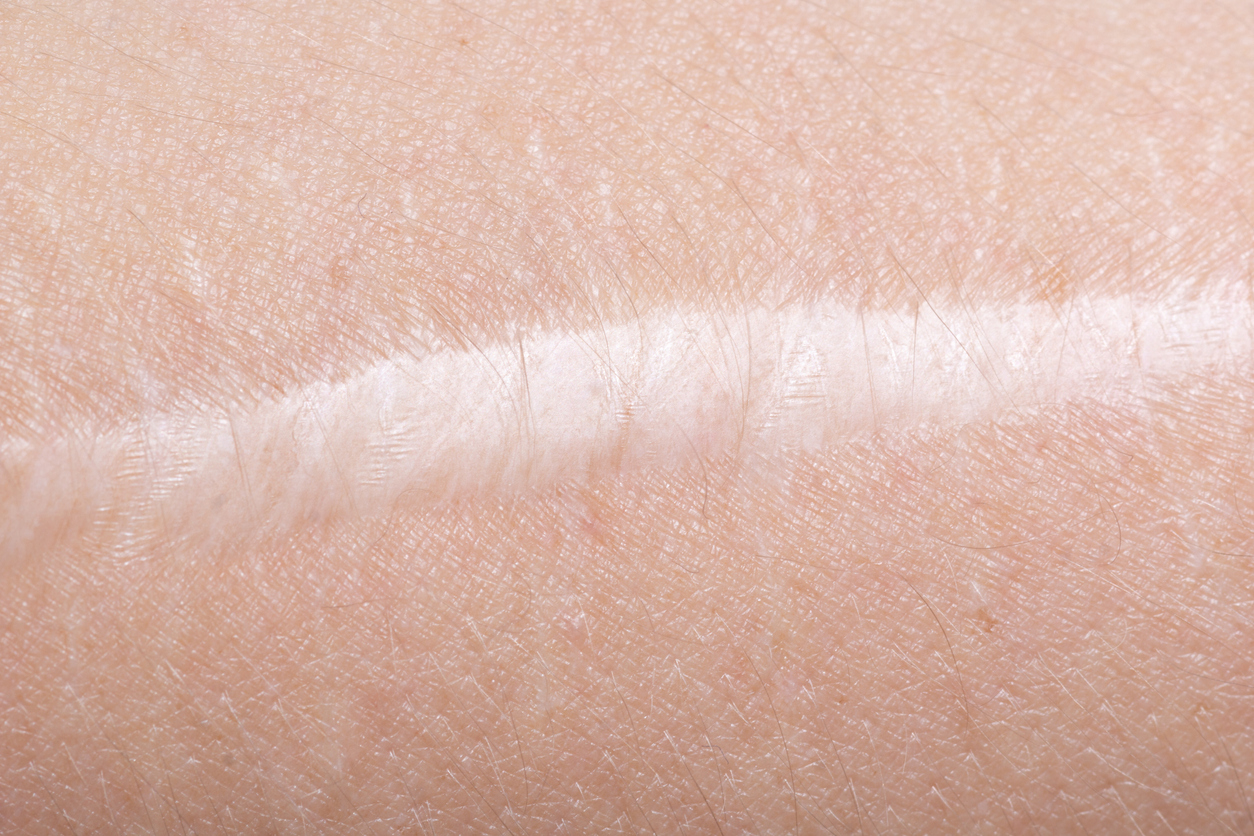
Upper arm lift surgery always leaves a scar. The scar is usually on the back of the arm or the inner aspect of the upper arm, although the exact placement can vary. The good news is that elderly arm lift patients rarely develop keloid or hypertrophic scars since they tend to have a lower inflammatory response as the surgical wound heals. (Ref 2)
FAQs
Is it safe for older patients to have other body contouring procedures during an arm lift?
Too many elective surgical procedures in one day can be risky, whether a patient is old or young.
Will I need to wear a compression garment after an arm lift (brachioplasty)?
Yes. Wearing a compression garment helps the upper arm tissues adhere together. It also lowers the risk of seroma (excess fluid build-up). (Ref 6) Compression can also reduce swelling in the upper arms immediately after surgery.
Should I have an arm lift before or after I have lost weight?
If you plan to lose weight, do it beforehand. If you lose weight after arm lift surgery, you could end up with excess skin on your arms again.
What is extended brachioplasty?
Older patients may be interested in removing excess skin in other areas besides their upper arms or inner arm. The armpit and sides of the chest may also have excess fat and excess skin, especially in patients that have achieved significant weight loss. In these cases, our surgeons may suggest an extended arm lift procedure to tighten loose skin on the upper arm, underarm, and lateral chest wall.
Can I use private health insurance for an arm lift (brachioplasty surgery)?
Private insurance may cover some hospital costs if the patient has an arm lift for medically necessary reasons, depending on the plan and level of cover. Strict criteria applies. However, most patients pay for arm lift surgery out-of-pocket since it is usually considered cosmetic surgery.
References
- Eckhart, Leopold, et al. “Autophagic control of Skin aging.” Frontiers in Cell and Developmental Biology, vol. 7, 2019.
- Téot, Luc, et al. “Textbook on Scar Management.” Springer eBooks, 2020.
- Stevenson, Susan C., and M. Julie Thornton. “Effect of Estrogens on Skin Aging and the Potential Role of SERMs.” Clinical Interventions in Aging, vol. Volume 2, Dove Medical Press, Oct. 2007, pp. 283–97.
- Bernstein, Eric F., et al. “Long-term Sun Exposure Alters the Collagen of Thepapillary Dermis.” Journal of the American Academy of Dermatology, vol. 34, no. 2, Elsevier BV, Feb. 1996, pp. 209–18.
- Mordarska, Katarzyna, and Małgorzata Godziejewska-Zawada. “Diabetes in the Elderly.” Przeglad Menopauzalny, vol. 2, Termedia Publishing House, Jan. 2017, pp. 38–43.
- Society, Endocrine. “Diabetes and Older Adults.” Endocrine Society, Mar. 2022.
- Zhang, Shoubing, and Enkui Duan. “Fighting Against Skin Aging.” Cell Transplantation, vol. 27, no. 5, SAGE Publishing, Apr. 2018, pp. 729–38.
- Wollina, Uwe, et al. “Dermatoporosis – the Chronic Cutaneous Fragility Syndrome.” Open Access Macedonian Journal of Medical Sciences, vol. 7, no. 18, ID Design 2012/DOOEL Skopje, Aug. 2019, pp. 3046–49.
- Farage, Miranda A., et al. “Characteristics of the Aging Skin.” Advances in Wound Care, vol. 2, no. 1, Mary Ann Liebert, Inc., Feb. 2013, pp. 5–10.
- Kaya, Gürkan, and Jean-Hilaire Saurat. “Dermatoporosis: A Chronic Cutaneous Insufficiency/Fragility Syndrome.” Dermatology, vol. 215, no. 4, Karger Publishers, Jan. 2007, pp. 284–94.
- “Dermatoporosis – the Chronic Cutaneous Fragility Syndrome.” Open Access Macedonian Journal of Medical Sciences, vol. 7, no. 18, ID Design 2012/DOOEL Skopje, Aug. 2019, pp. 3046–49.



